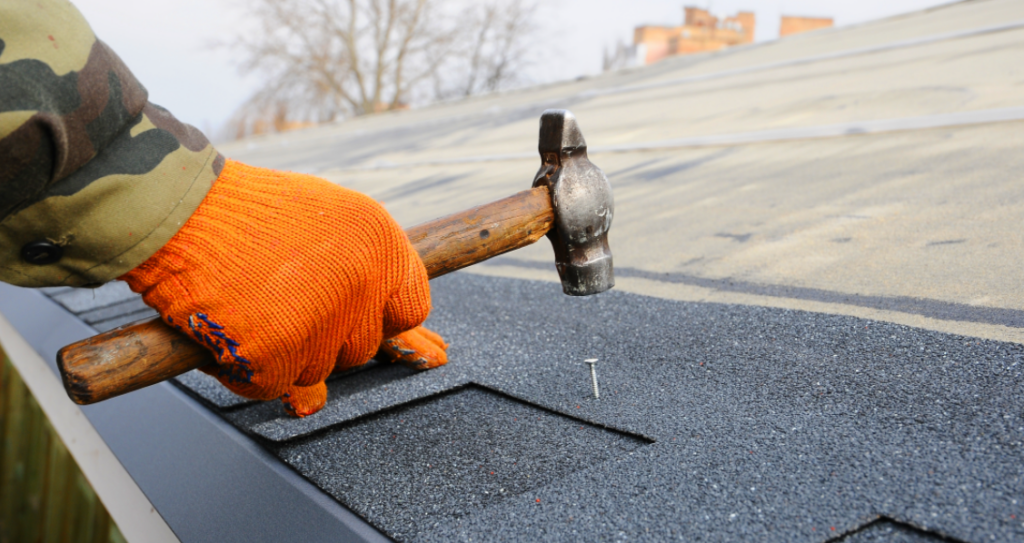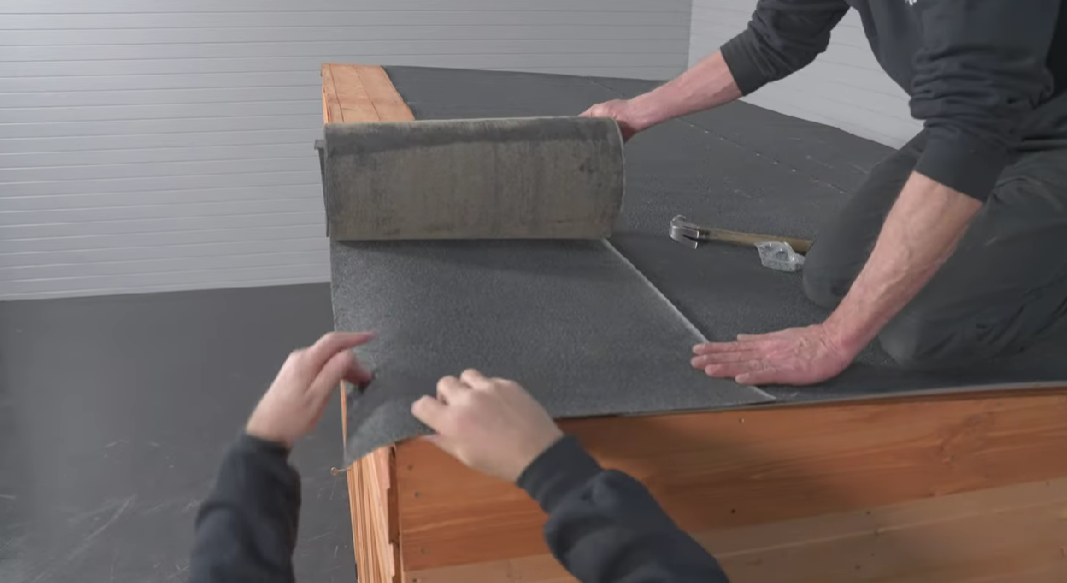Credit: Roof Giant 15 mm clout nails with large heads are recommended for fastening materials on shed roofs. This mid-sized nail provides enough length to grip into the roof deck without the risk of poking through. The large flat head gives a secure hold. – Use 15 mm galvanised clout nails for shed roofs In my experience as a contractor, 15 mm clout nails are the ideal size and type for DIY shed roof projects. The thickness provides good holding power without the risk of over-penetrating the roof. The large head resists pull-through. Following the 50 mm spacing guidelines will lead to a water-resistant roof. When it comes to choosing clout nails for securing your shed roof, the recommended size is 15 mm with a large head. These thicker, sturdier nails will hold the roofing felt tightly in place. Here are some key tips on using clout nails for a shed roof: The right size and type of clout nail will ensure your shed’s roof stays watertight for years. Aim for 15 mm galvanised nails with large heads to fasten the roofing felt and overlap securely. Credit: Tiger Sheds If you’re looking for a slightly smaller clout nail for your shed roof, 13 mm is a good option. While 15 mm is often recommended, 13 mm nails can work well too. The key is ensuring the nail head is large enough to properly secure the roofing felt without pulling through. Here are some tips on using 13 mm clout nails: The most important thing is ensuring the nail head is large enough and the nails are spaced closely enough for a tight hold. With the right nail head size and spacing, 13 mm clout nails can work for shed roofs if 15 mm nails are unavailable. When it comes to felt roofing for your shed, using galvanised nails is crucial for longevity. The zinc coating of galvanised nails provides excellent corrosion resistance compared to standard steel nails. This prevents rust from forming and causing the nails to degrade over time. Rust on nails will lead to a weaker hold and potentially leaks as the roofing felt becomes detached. The galvanised coating protects against this. Opt for hot-dipped galvanised nails rather than electroplated ones. Hot-dipped nails tend to have a thicker coating for improved rust prevention. The coating will be smooth and consistent over the entire nail. In terms of size, aim for large-headed nails around 15 mm for optimal grip. The large head prevents pull-through. Space nails about 50 mm apart across the roofing felt for a tight hold. Investing in good quality galvanised clout nails will pay off in the long run with a more durable shed roof. Be sure to check recommendations from your specific felt manufacturer too. When installing felt on your shed’s roof, you’ll need to use the right type of nails for a secure and long-lasting finish. Ring shank nails are a great choice as the rings on the shank provide excellent holding power. The deformed shank resists pull out from wind uplift or thermal expansion and contraction. Another good option is spiral shank nails. The spiral shank design provides similar resistance to pull out as ring shank nails. Smooth shank nails, while cheaper, are more prone to backing out over time. Go for a ring shank or spiral for better performance. In terms of nail head types – clout nails are ideal for sheds. The broad head sits flush on the felt to provide watertightness. When installing roofing felt, be sure to check the manufacturer’s recommendations for the correct nail type and size. Investing in quality nails will help the roof stand the test of time. When it comes to installing felt on your shed’s roof, proper technique is key for getting a watertight finish. Following the manufacturer’s instructions for overlap and nailing patterns is key. Taking care at each step creates a robust, weatherproof roof surface. Galvanised roofing nails with large heads, such as clout nails, are commonly used for shed roofs. When attaching roofing felt, clout nails should be spaced about 50 mm apart to securely fasten the material. Clout nails come in various sizes, typically ranging from 10 mm to 25 mm in length. 15 mm is a common size. Yes, roofing felt should be nailed down with clout nails rather than staples for a more secure shed roof. In summary, clout nails are an ideal fastener for shed roofs. Opt for galvanised 15 mm clout nails with large heads to securely attach roofing felt and other materials. Space the nails about 50 mm apart across the roof. Using the proper-sized clout nails will lead to a durable and weather-resistant shed roof.
What Size Clout Nails for Shed Roof?

Key Points
– Space clout nails 50 mm apart when fastening roofing felt
– Clout nails have a larger head for secure fasteningOur Opinion
What Size Clout Nails for Shed Roof?
Tips for Using Clout Nails on Shed Roofs

Importance of Galvanised Nails for Shed Roofs
Best Nails for Installing Roofing Felt on Sheds
Techniques for Installing Roofing Felt on Shed Roofs
FAQ
What nails do I need for the shed roof?
How far apart should clout nails be on the shed roof?
What size are clout nails?
Should you nail felt on the shed roof?
Conclusion
